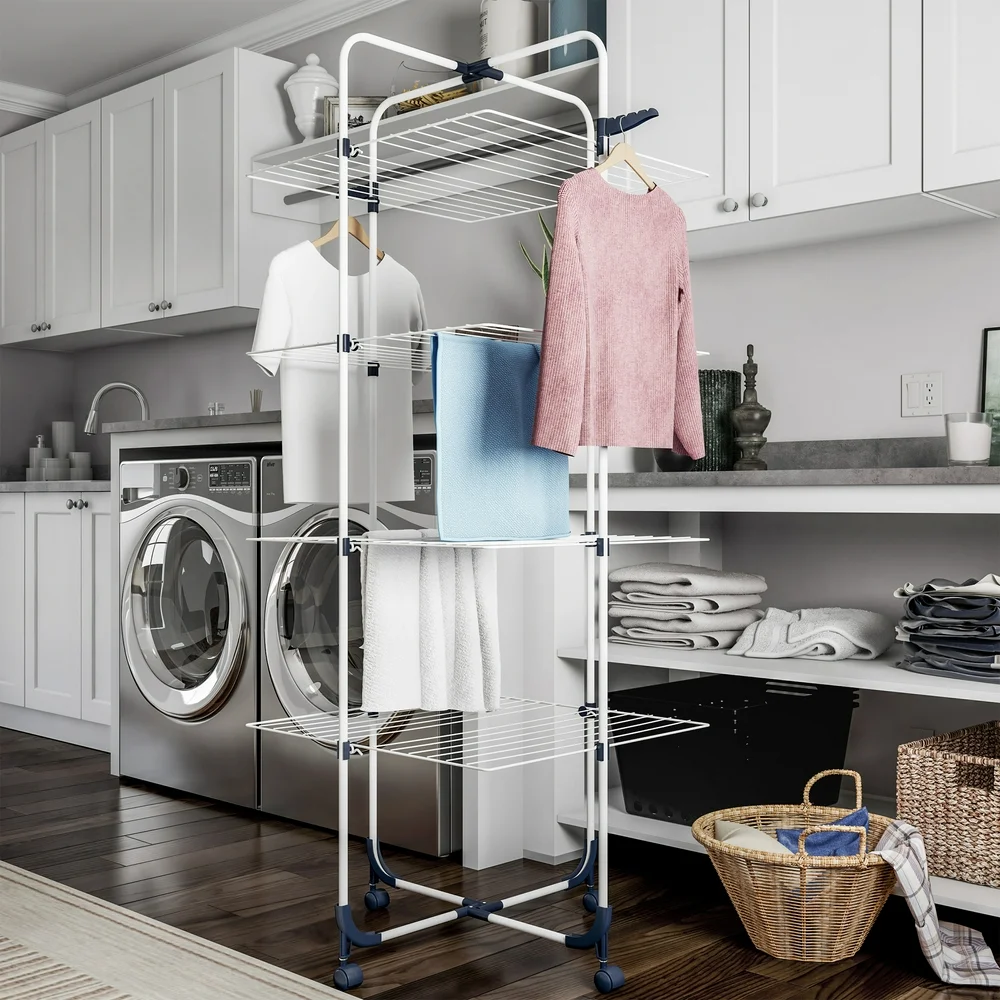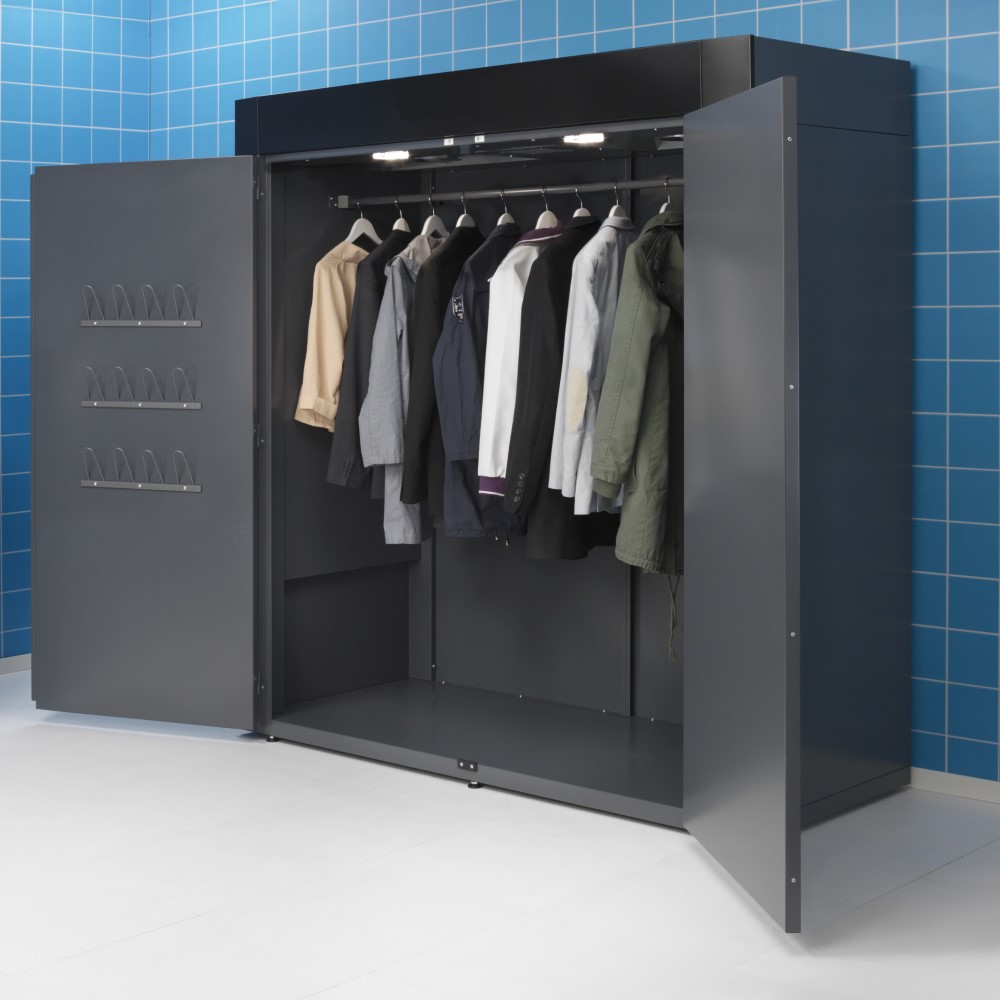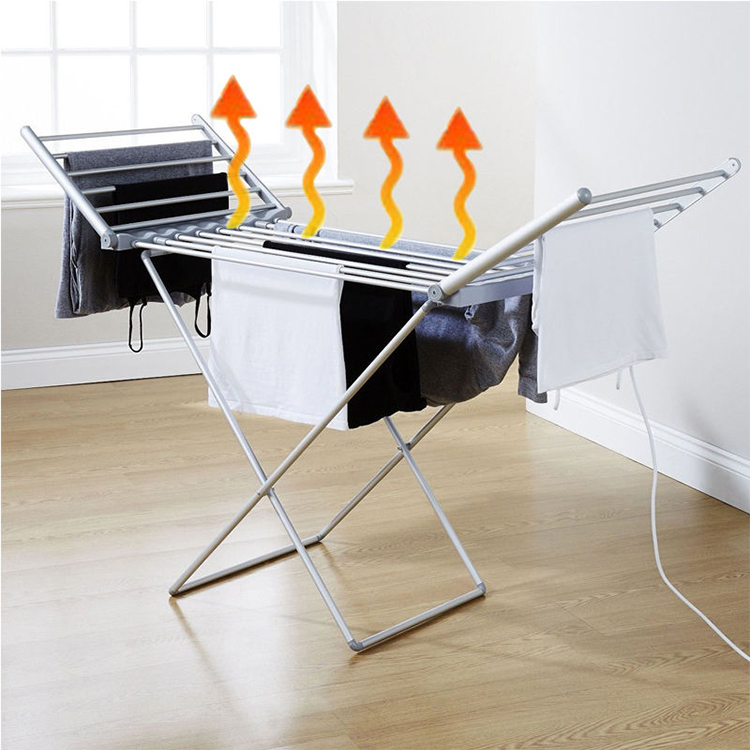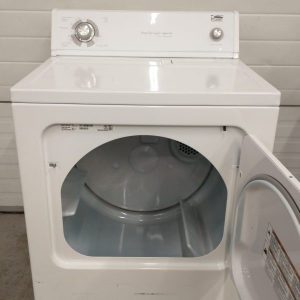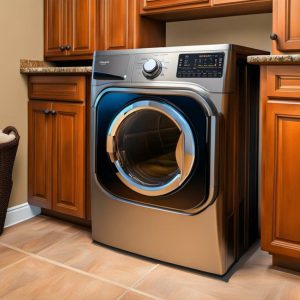How to Dry Clothes Without Dryer: Effective Techniques
Drying clothes without a dryer might sound challenging at first, but with the right techniques and a bit of patience, you can achieve perfectly dry garments while saving energy and reducing your utility bills. Whether you’re dealing with a power outage, aiming to reduce your carbon footprint, or simply looking to extend the life of your clothes, learning how to dry clothes without dryer can be incredibly beneficial. This comprehensive guide will explore various methods, provide practical tips, and help you choose the best approach for your needs.
Essential Preparations for Air-Drying Clothes
How to dry clothes without dryer? To effectively dry clothes without a dryer, proper preparation is crucial. These steps ensure that your clothes dry efficiently and maintain their quality.
Sorting Your Laundry
Start by sorting your laundry based on fabric types and drying requirements. Delicate fabrics like silk and wool should be separated from heavier items such as jeans and towels. This approach prevents damage and allows for more efficient drying.
Proper Washing Techniques
Using the right washing techniques can significantly impact the drying time. Opt for shorter wash cycles and reduce the amount of detergent to prevent excessive moisture retention. Additionally, avoid overloading the washing machine to ensure clothes are thoroughly rinsed and excess water is removed.
Removing Excess Water
Before beginning the drying process, remove as much water as possible from your clothes. Gently wring out garments or use a clothes wringer to extract excess moisture. The less water your clothes contain, the quicker and more efficiently they will dry.
Indoor Drying Methods
When outdoor drying isn’t an option, indoor drying can be a reliable alternative. Here are some effective indoor methods to consider.
Using a Drying Rack
A drying rack is a versatile and space-efficient tool for drying clothes indoors. Here’s how to make the most of it:
- Placement: Position the rack in a well-ventilated area, preferably near a window or in a room with good airflow.
- Spacing: Ensure clothes are adequately spaced on the rack to allow air to circulate around each item.
- Height Considerations: Use multiple levels or tiered racks to maximize space and accommodate different garment types.
Advantages of Drying Racks
- Space-Saving: Ideal for small apartments or homes with limited outdoor space.
- Adjustable: Many racks are foldable or adjustable, making them easy to store when not in use.
- Versatile: Suitable for a variety of clothing items, including delicate fabrics.
Utilizing Hangers
Hanging clothes on hangers can be an efficient way to dry garments, especially when vertical space is available.
- Shirts and Dresses: Hang these items directly on hangers to prevent wrinkles and maintain shape.
- Using Shower Rods: Install additional rods in bathrooms or other suitable areas to create more hanging space.
- Space Optimization: Use multi-tier hangers to increase the number of clothes you can dry simultaneously.
Benefits of Using Hangers
- Wrinkle Reduction: Hanging clothes helps prevent wrinkles, reducing the need for ironing.
- Time Efficiency: Garments can dry faster when hung properly, especially in areas with good airflow.
- Easy Accessibility: Easily access and rearrange clothes on hangers as they dry.
Maximizing Airflow with Fans and Open Windows
Enhancing airflow can significantly speed up the drying process. Here’s how to optimize your indoor drying setup:
- Positioning Fans: Place fans near the drying area to circulate air and reduce humidity.
- Opening Windows: If weather permits, open windows to allow fresh air to flow through, facilitating quicker drying.
- Using Dehumidifiers: In humid climates, a dehumidifier can help remove excess moisture from the air, improving drying efficiency.
Tips for Enhanced Airflow
- Avoid Clumping: Ensure clothes are spread out rather than piled together to allow maximum airflow.
- Rotate Clothes: Occasionally rotate or rearrange clothes on the drying rack to expose different areas to the airflow.
- Maintain Ventilation: Keep doors open to promote better ventilation and prevent dampness in the drying area.
Outdoor Drying Techniques
When weather permits, outdoor drying can be the most effective and natural way to dry clothes.
Utilizing a Clothesline
A traditional clothesline is a simple and effective method for drying clothes outdoors.
- Installation: Securely install a clothesline in your yard, balcony, or any suitable outdoor space.
- Spacing and Tension: Ensure the line is taut and allow adequate spacing between garments to prevent overlapping.
- Sunlight Exposure: Position the clothesline to maximize exposure to sunlight, which acts as a natural disinfectant and bleaching agent.
Advantages of a Clothesline
- Natural Scent: Clothes often smell fresher when dried naturally in the sun.
- Energy-Free: Completely eliminates the need for electrical appliances.
- UV Protection: Sunlight can help kill bacteria and remove odors from clothes.
Folding Clothes Outdoors
For faster drying, consider folding clothes rather than hanging them.
- Flat Surface: Use a clean, flat surface like a table or a clean floor area.
- Air Circulation: Make sure clothes are spread out evenly to allow air to circulate around each item.
- Turning Frequently: Regularly turn and rearrange clothes to ensure all areas dry evenly.
Benefits of Folding Clothes Outdoors
- Quick Drying: Folded clothes can dry faster as they have more surface area exposed to the air.
- Space Efficiency: Maximizes the use of available outdoor space, especially in areas with limited hanging options.
- Prevents Wind Damage: Reduces the risk of clothes being blown away or tangled by strong winds.
Innovative Drying Solutions
Beyond traditional methods, there are several innovative solutions that can help you dry clothes without a dryer.
Using a Towel to Absorb Moisture
Speed up the drying process by using a dry towel to absorb excess water from wet clothes.
- Rolling Technique: Lay the wet garment flat on a dry towel, then roll them together, pressing firmly to transfer moisture.
- Repeat if Necessary: Use multiple towels for heavily damp clothes to remove as much moisture as possible before air-drying.
- Benefits: Reduces drying time and prevents clothes from taking too long to dry naturally.
Steps for the Towel Method
- Step 1: Spread a dry towel on a flat surface.
- Step 2: Place the wet garment on top of the towel.
- Step 3: Roll the towel and garment together tightly.
- Step 4: Press firmly to transfer moisture from the garment to the towel.
- Step 5: Unroll and hang the garment to finish drying.
Utilizing a Radiator or Heating Source
Harness the warmth from radiators or other heating sources to accelerate drying.
- Safe Placement: Ensure clothes are placed at a safe distance from heating elements to prevent overheating or damage.
- Appropriate Fabrics: Use this method for durable fabrics that can withstand higher temperatures without shrinking or fading.
- Monitoring: Regularly check the clothes to prevent any potential damage from prolonged exposure to heat.
Advantages of Using Heat Sources
- Faster Drying: Heat from radiators significantly reduces drying time.
- Convenient: Easily accessible in most homes, making it a practical solution.
- Energy-Efficient: Utilizes existing heat in your home without the need for additional appliances.
Creating a DIY Drying Cabinet
For those who frequently need to dry clothes without a dryer, a DIY drying cabinet can be a practical investment.
- Building the Cabinet: Use shelves, mesh racks, and proper ventilation to construct a space optimized for drying clothes.
- Ventilation and Heating: Ensure the cabinet has adequate ventilation and, if possible, a small heating element to enhance drying.
- Organization: Design the cabinet with enough space to accommodate multiple garments and facilitate easy airflow.
Benefits of a Drying Cabinet
- Space Management: Keeps drying clothes organized and contained in one area.
- Protection: Shields clothes from dust and insects while drying.
- Efficiency: Promotes faster drying through controlled airflow and temperature.
Tips for Faster and More Efficient Air-Drying
While knowing the methods is essential, applying certain tips can make the drying process faster and more efficient.
Choose the Right Time to Dry Outdoors
Timing plays a crucial role in the effectiveness of outdoor drying.
- Morning Sun: Start drying early in the morning to take advantage of the full day’s sunlight.
- Avoid High Humidity: Dry clothes when the air is dry and avoid times of high humidity, which can slow down the drying process.
- Windy Days: Utilize windy days to enhance airflow and speed up drying.
Optimize Your Drying Setup
Setting up your drying area correctly can make a significant difference.
- Maximize Space: Use vertical space and multiple drying racks to accommodate more clothes.
- Strategic Placement: Place drying racks or lines in areas with the best sunlight and airflow.
- Efficient Arrangement: Arrange clothes in a way that allows each piece to dry evenly without overlapping.
Maintain Clean Drying Areas
Keeping your drying area clean can prevent issues such as mold and mildew.
- Regular Cleaning: Clean drying racks and lines regularly to remove dust and debris.
- Prevent Mold Growth: Ensure good airflow and avoid leaving damp clothes in enclosed spaces for too long.
- Use Antimicrobial Sprays: Consider using sprays that prevent mold and mildew on drying surfaces.
Proper Folding and Hanging Techniques
How you fold and hang your clothes can impact drying efficiency.
- Flat Drying vs. Hanging: For certain items like sweaters, flat drying can prevent stretching, while hanging is better for shirts and dresses.
- Tie Instead of Fold: For delicate items, gently tying them can help maintain their shape while drying.
- Rolling Clothes: Folding clothes strategically can help them dry more evenly and quickly.
Managing Different Fabric Types
Different fabrics have diverse drying requirements. Understanding these can help you dry each type effectively without causing damage.
Cotton
Cotton is a durable fabric that can be easily dried using most air-drying methods.
- Hang or Lay Flat: Depending on the garment, use either a drying rack or a flat surface.
- Avoid Direct Sunlight: To prevent excessive fading, dry cotton clothes in the shade or use indirect sunlight.
- Shake Before Drying: Give cotton clothes a good shake before hanging to reduce drying time and minimize wrinkles.
Wool and Delicates
Delicate fabrics require gentle handling to maintain their shape and texture.
- Flat Drying: Lay delicate items flat on a clean towel to dry, preventing stretching and distortion.
- Use Hangers for Shape: For certain delicate garments, using padded hangers can help maintain their form.
- Avoid Heat Sources: Keep delicate fabrics away from direct heat to prevent damage.
Synthetics and Blends
Synthetic fabrics and blends dry relatively quickly and are less prone to shrinkage.
- Hanging is Best: Use hangers or drying racks for even airflow and faster drying.
- Avoid Overlapping: Ensure synthetic garments are spaced out to maximize airflow.
- Use of Fans: Enhance drying speed by using fans to circulate air around synthetic fabrics.
Towels and Heavy Fabrics
Towels and heavy fabrics contain more water and require more time and space to dry.
- Spread Out Fully: Lay towels flat or hang them with plenty of space to allow thorough drying.
- Multiple Racks: Utilize multiple drying racks or lines to manage the volume of heavy fabrics.
- Turn Inside Out: Flip towels and heavy garments halfway through drying to ensure even moisture removal.
Overcoming Common Air-Drying Challenges
Air-drying clothes without a dryer can come with its own set of challenges. Here’s how to address some of the most common issues.
Dealing with Humidity
High humidity levels can significantly slow down the drying process.
- Use a Dehumidifier: Invest in a dehumidifier to reduce moisture levels in your drying area.
- Increase Ventilation: Open windows and doors to allow humid air to escape and fresh air to circulate.
- Drying at Night: In some climates, drying at night when humidity drops slightly can help.
Preventing Musty Odors
Improper drying can lead to musty smells in your clothes.
- Ensure Complete Drying: Make sure all parts of the garment are thoroughly dry before storing.
- Proper Ventilation: Maintain good airflow in the drying area to prevent moisture buildup.
- Use Natural Fresheners: Adding a few drops of essential oils to your drying area can impart a pleasant scent to your clothes.
Avoiding Wrinkles
Preventing wrinkles is essential to keep clothes looking fresh without the need for ironing.
- Smooth Out Clothes Before Drying: Shake out garments before hanging to reduce wrinkles.
- Use Hangers Correctly: Ensure clothes hang freely without overlapping to allow them to dry naturally without creasing.
- Immediate Folding: Once clothes are dry, fold them promptly to prevent wrinkles from setting in.
Managing Limited Space
Limited space can make air-drying a challenge, especially in small living environments.
- Use Multi-Tiered Racks: Opt for drying racks with multiple levels to maximize drying capacity.
- Foldable and Portable Options: Choose drying solutions that can be easily folded and stored when not in use.
- Creative Placement: Utilize unused spaces like behind doors, in corners, or over furniture to set up your drying area.
Seasonal Considerations for Air-Drying Clothes
Different seasons present unique challenges and opportunities for air-drying clothes effectively.
Spring and Summer
Warmer and often sunnier, these seasons are ideal for outdoor drying.
- Maximize Sunlight: Utilize longer daylight hours to dry clothes more quickly.
- Manage Pollen: Be cautious of pollen exposure; dry clothes in a sheltered area to prevent pollen from settling on them.
- Handle Thunderstorms: Protect drying clothes from unexpected rain by having a backup drying setup indoors.
Autumn
As temperatures drop, adjusting your drying methods is necessary.
- Indoor Focus: Shift more drying activities indoors as outdoor drying becomes less efficient.
- Use Heated Spaces: Take advantage of heated indoor areas to enhance drying speed during colder months.
- Wind Considerations: Utilize breezy days to optimize airflow even in cooler weather.
Winter
Drying clothes during winter requires careful planning due to low temperatures and reduced sunlight.
- Utilize Heat Sources: Use indoor heating elements to assist with drying clothes more effectively.
- Increase Ventilation: Ensure adequate ventilation to prevent moisture buildup and maintain indoor air quality.
- Layering Techniques: Layering clothes on drying racks can help retain heat and promote faster drying.
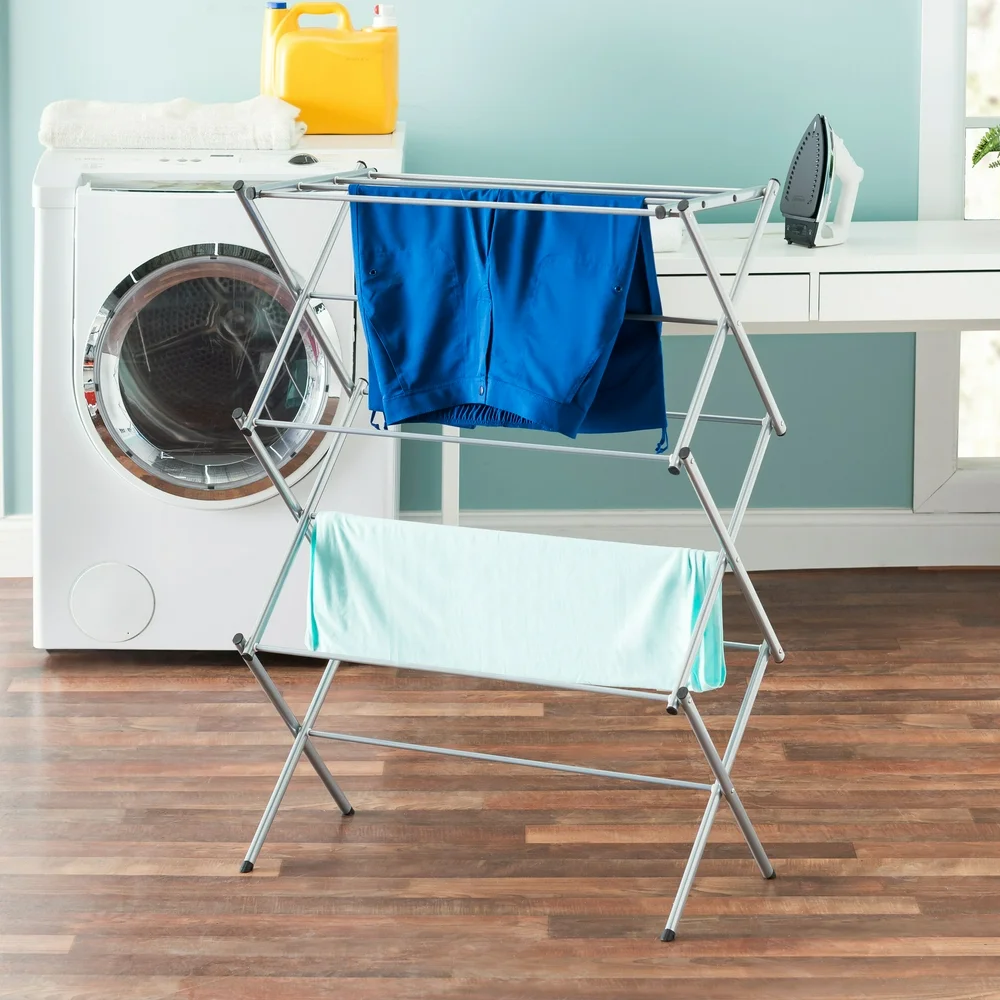 Conclusion
Conclusion
In conclusion, mastering how to dry clothes without dryer is entirely achievable with the right knowledge and techniques. By understanding the various methods, preparing your laundry properly, and addressing common challenges, you can efficiently dry your clothes while enjoying numerous benefits, including energy savings, fabric longevity, and environmental sustainability. Embrace these practices to enhance your laundry routine and contribute to a greener, more cost-effective lifestyle.

